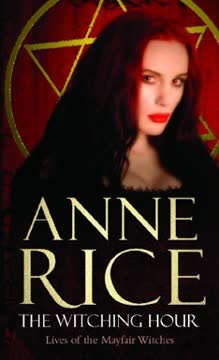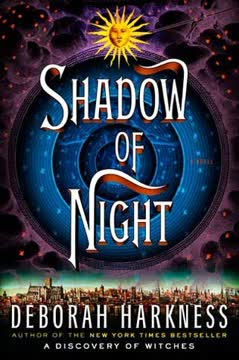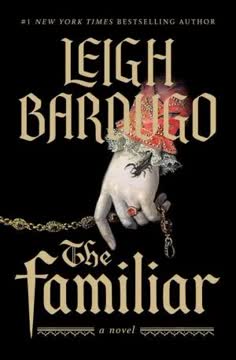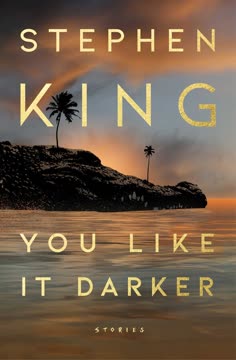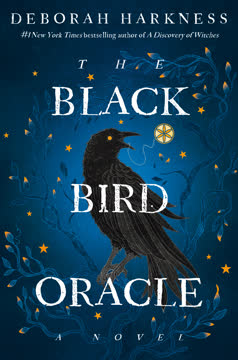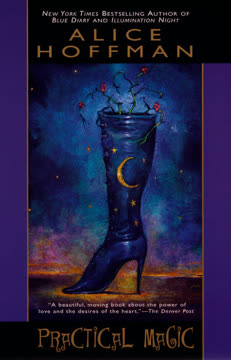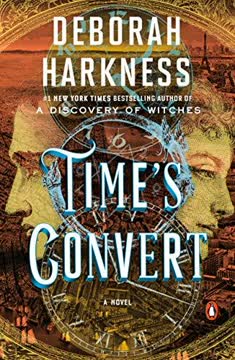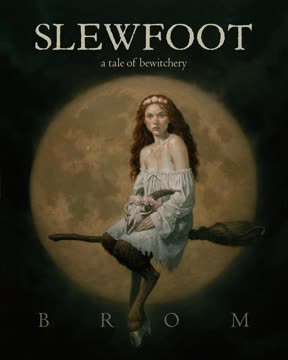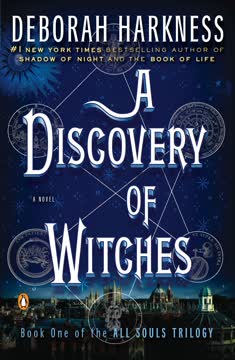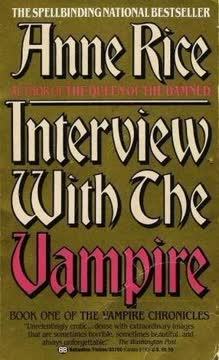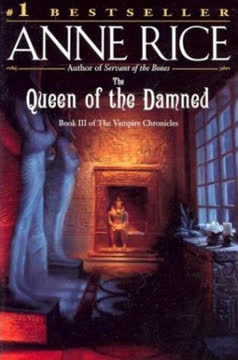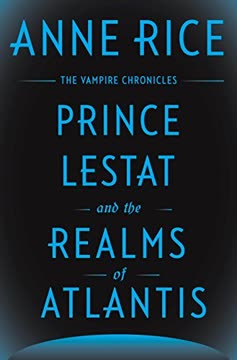Plot Summary
Haunted Dreams and Mysterious Encounters
In a New York hotel, a doctor is haunted by dreams of a New Orleans house and a mysterious brown-eyed man. These dreams are triggered by a chance encounter with an Englishman, Aaron Lightner, who mentions New Orleans as a haunted city. The doctor recalls a ghostly experience in New Orleans involving a catatonic woman named Deirdre Mayfair and a spectral man named Lasher. The doctor is tormented by his inability to help Deirdre and the strange occurrences he witnessed in the Mayfair house.
The Enigmatic Mayfair Family
The Mayfair family is known for its wealth and secrets. Deirdre's condition is a result of a troubled past, including the mysterious deaths of her mother and grandmother. The family is rumored to have connections to witchcraft and a spectral figure named Lasher. Despite the family's influence and wealth, they are plagued by tragedy and scandal. The doctor learns of the family's history through gossip and his own experiences, but the truth remains elusive.
Rowan's Secret Power
Rowan Mayfair, a brilliant neurosurgeon, possesses a secret power: the ability to kill with her mind. This power has manifested in the deaths of three people, including her adoptive father, Graham. Rowan struggles with the moral implications of her ability and fears its potential for harm. She is haunted by her past actions and the possibility that she may use her power again. Despite her success as a surgeon, Rowan feels isolated and burdened by her secret.
Michael Curry's Psychic Awakening
Michael Curry, a contractor, drowns and is revived by Rowan. After his near-death experience, he gains the ability to see the history of objects through touch. This newfound power overwhelms him, and he becomes obsessed with remembering what he saw during his time "dead." Michael isolates himself, struggling to cope with his abilities and the media attention they attract. He believes he has a purpose to fulfill but cannot recall what it is.
A Fateful Meeting
Dr. Morris, Michael's doctor, contacts Rowan, urging her to meet Michael. Michael believes that touching the deck of Rowan's boat, where he was revived, might help him remember his purpose. Rowan agrees to meet him, feeling a connection to Michael and hoping he might understand her own psychic burden. As they prepare to meet, both are on the brink of discovering truths about themselves and the mysterious forces that bind them.
The Talamasca's Secret Archives
Michael Curry, drawn to the Mayfair house by visions and a sense of purpose, is introduced to the Talamasca, an ancient order dedicated to studying the supernatural. Aaron Lightner, a member of the Talamasca, provides Michael with a file on the Mayfair witches, revealing centuries of history and the family's connection to the spectral figure, Lasher. As Michael delves into the archives, he uncovers the dark and tragic past of the Mayfairs, including the trials and tribulations of their ancestors. This knowledge deepens his understanding of the forces at play and his role in the unfolding events.
Deborah's Bewitching Transformation
In Amsterdam, the girl, Deborah, begins to transform from a silent child into a young woman of striking beauty and mysterious power. Her presence captivates those around her, and she becomes the center of attention in the Talamasca's Motherhouse. Despite her silence, Deborah's power is undeniable, and she begins to learn the ways of the Talamasca, though she remains wary of their intentions. Her rescuer, Petyr van Abel, now deeply infatuated, struggles with his feelings and the knowledge that he has brought a powerful witch into their midst.
The Tragic Love of Mary Beth
Mary Beth Mayfair, a powerful figure in the family, is known for her numerous lovers and her ability to manipulate those around her. Her relationship with Daniel McIntyre, a judge and former lover of Julien, is particularly complex. Despite her many affairs, Mary Beth remains devoted to Daniel, who is deeply in love with her. Their relationship is marked by passion and tragedy, reflecting the intricate dynamics of the Mayfair family and the supernatural forces at play.
Inheritance of Secrets and Shadows
Rowan Mayfair arrives at the decaying Mayfair mansion, a place steeped in mystery and family secrets. She meets her great-aunt Carlotta, who reveals that Rowan is the heir to a vast fortune and a powerful, cursed legacy. Carlotta warns Rowan about a spectral figure named Lasher, who has haunted the Mayfair family for generations. Rowan is skeptical but intrigued by the tales of witchcraft and the supernatural that surround her family. As she explores the house, she feels the weight of her inheritance and the shadows of the past closing in.
Rowan's Unseen Battle
Rowan is haunted by the presence of Lasher, who seems to be testing her strength and resolve. She experiences strange occurrences and unsettling dreams, leaving her questioning her sanity. Despite her fears, Rowan is determined to confront the spectral figure and understand its true nature. Her internal struggle is compounded by the pressure of her family's expectations and the weight of the Mayfair legacy. As she prepares for her wedding to Michael, Rowan must find a way to balance her personal desires with the demands of her supernatural inheritance.
The Pact and the Prophecy
Lasher reveals to Rowan the ancient pact made with the Mayfair witches: a promise of service in exchange for bearing a female child to inherit power. This covenant, shrouded in mystery, is tied to the prophecy of the thirteen witches and the opening of a doorway. Lasher insists that Rowan is the thirteenth witch, the doorway through which he can become flesh. Despite Rowan's skepticism, Lasher's manipulation and the weight of her family's legacy press upon her, leading her to question her role in this supernatural scheme.
Rowan's Desperate Decision
As Christmas Eve approaches, Rowan is torn between her love for Michael and the seductive promises of Lasher. She struggles with the knowledge that Lasher intends to use her unborn child as a vessel for his rebirth. Despite her attempts to resist, the pressure mounts, and she is forced to make a heart-wrenching decision. In a moment of desperation, she sends Michael away, knowing that she must face Lasher alone. Her actions set in motion a chain of events that will change everything.
The Birth of a Monster
In a terrifying and surreal sequence, Lasher is reborn into the flesh of Rowan and Michael's child. The process is violent and grotesque, as Lasher's spirit merges with the infant's body, creating a new and powerful being. Rowan, overwhelmed by the horror of what she has done, is left to confront the consequences of her actions. Lasher, now in human form, is a creature of immense power and ambition, and his presence poses a grave threat to all who stand in his way.
Michael's New Reality
Michael settles into a new routine, living in the Mayfair house and waiting for Rowan's return. He is haunted by memories of the past and the knowledge that Lasher is out there, a living embodiment of his and Rowan's child. Despite the pain, Michael finds solace in the beauty of the world around him and the belief that Rowan will one day come back to him. He embraces the idea that life is defined by choice and accident, and that even in the face of darkness, there is hope for redemption and change.
Characters
Rowan Mayfair
Rowan is a brilliant neurosurgeon who becomes the thirteenth witch in the Mayfair legacy. Torn between her love for Michael and the seductive promises of Lasher, she makes a desperate decision that leads to the birth of a monster. Her actions are driven by a complex mix of ambition, fear, and love, and she is left to grapple with the consequences of her choices.
Michael Curry
Michael is a man with psychic abilities who becomes entangled in the Mayfair legacy. He is devastated by Rowan's betrayal and the loss of their child, but he remains hopeful that she will return and find a way to destroy Lasher. Michael's journey is one of heartbreak and resilience, as he struggles to find meaning in the chaos and hold onto his belief in the goodness of humanity.
Lasher
Lasher is a mysterious entity connected to the Mayfair family for generations. He manipulates Rowan into becoming the doorway for his rebirth, using her child as a vessel for his transformation into flesh. Lasher is a creature of immense power and ambition, and his presence poses a grave threat to all who stand in his way.
Aaron Lightner
Aaron is a member of the Talamasca, an ancient order dedicated to studying the supernatural. He offers guidance and support to Michael, providing valuable insights into the nature of Lasher and the Mayfair legacy. Aaron's involvement is crucial to Michael's survival and the resolution of the family's dark history.
Carlotta Mayfair
Carlotta is Rowan's great-aunt, who has spent her life trying to protect the family from the malevolent influence of Lasher. Her confessions reveal a lifetime of bitterness and regret, as she implores Rowan to break the chain of darkness. Carlotta's death leaves Rowan with the burden of the family's sins and the responsibility to confront their legacy.
Beatrice Mayfair
Beatrice is a vibrant and charismatic member of the Mayfair family, known for her love of parties and social gatherings. She is supportive of Michael and Rowan's relationship and is deeply concerned about the events that have unfolded. Beatrice's warmth and enthusiasm make her a beloved figure within the family.
Deborah Mayfair
Deborah is a young girl with mysterious powers, taken from her village by a member of the Talamasca. As she grows into a woman, her beauty and power captivate those around her. She is both fascinated and frightened by the spirit Lasher, and her journey of self-discovery is marked by the tension between her desires and the expectations of the Talamasca.
Petyr van Abel
A young member of the Talamasca who defies the order's rules to rescue Deborah. He is driven by compassion and a sense of duty, but struggles with his own desires and the consequences of his actions. His love for Deborah becomes a consuming force, leading to a tragic and complex relationship.
Julien Mayfair
Julien is a central figure in the Mayfair family, known for his charm, influence, and supernatural abilities. He is both a protector and a manipulator, with a complex relationship with his family and the spectral figure Lasher. Julien's life is marked by secrets and intrigue, and his missing autobiography symbolizes the untold stories of the Mayfairs.
Mary Beth Mayfair
Mary Beth is a dominant figure in the Mayfair family, known for her beauty, intelligence, and numerous lovers. Her relationship with Daniel McIntyre is complex and marked by passion and tragedy. Mary Beth's life is intertwined with the supernatural, and her actions influence the family's legacy.
Plot Devices
The Mayfair Legacy
The Mayfair family is shrouded in secrets, with a legacy of witchcraft and supernatural forces. This legacy influences the characters' actions and decisions, creating a sense of foreboding and intrigue. The family's history is a central plot device, driving the narrative and shaping the characters' destinies.
Psychic Abilities
Both Rowan and Michael possess unique psychic abilities that shape their lives. Rowan can kill with her mind, while Michael can see the history of objects through touch. These powers isolate them and drive the narrative as they seek understanding and control.
The Talamasca
The Talamasca is an ancient order dedicated to studying and documenting supernatural phenomena. Their archives provide crucial information about the Mayfair family and the forces at play. The Talamasca serves as a guiding force, offering knowledge and support to those who seek the truth.
The Spectral Figure
Lasher, the ghostly figure connected to the Mayfair family, serves as a mysterious and menacing force. His presence influences the characters' actions and adds an element of supernatural intrigue to the story. As Rowan and Michael confront the true nature of Lasher, they must navigate the dangers of the Mayfair legacy.
The Doorway
The concept of the doorway is central to the story, representing the path through which Lasher can become flesh. Rowan is the thirteenth witch, the key to opening the doorway and fulfilling the prophecy. The doorway symbolizes the intersection of the natural and supernatural, and the potential for transformation and change.
The Birth of Lasher
Lasher's rebirth into the flesh is a pivotal moment in the story, representing the culmination of the Mayfair legacy and the fulfillment of the prophecy. The birth is a grotesque and violent process, resulting in a powerful and ambitious being that poses a grave threat to all who stand in his way.
Analysis
"The Witching Hour" by Anne Rice explores the complex interplay of power, legacy, and choice within the Mayfair family. The narrative delves into the dark history of the Mayfairs, revealing a legacy of witchcraft and supernatural forces that shape the characters' destinies. The story examines the burden of inheritance and the struggle to break free from the past, as Rowan and Michael confront the malevolent entity Lasher. Through the lens of psychic abilities and the supernatural, Rice explores themes of identity, free will, and the consequences of one's actions. The novel serves as a cautionary tale about the seductive nature of power and the importance of understanding and controlling one's own abilities. Ultimately, "The Witching Hour" is a story of redemption and hope, as the characters strive to transform their legacy into something positive and find meaning in the face of darkness.
Last updated:
FAQ
```markdown
0. Synopsis & Basic Details
What is The Witching Hour about?
- A sweeping saga of a powerful family: The Witching Hour introduces the Mayfair legacy, a lineage of New Orleans witches bound to a mysterious, seductive, and dangerous entity named Lasher. The story primarily follows Rowan Mayfair, a brilliant neurosurgeon in San Francisco, who discovers she is the latest in this line of powerful women and the destined "thirteenth witch."
- A journey into the supernatural and a hidden history: The narrative intertwines Rowan's present-day life and burgeoning psychic abilities with the centuries-old history of the Mayfairs, meticulously documented by the Talamasca, a secret order dedicated to studying the supernatural. This history reveals a pattern of incest, power, and tragedy, all orchestrated by Lasher.
- A fated encounter and a looming prophecy: Rowan's path crosses with Michael Curry, a contractor who gains psychometric abilities after a near-death experience. Their connection is immediate and profound, drawing them both into the heart of the Mayfair legacy and a prophecy that foretells Lasher's ultimate goal: to achieve human form through the thirteenth witch.
Why should I read The Witching Hour?
- Immersive world-building and rich atmosphere: Anne Rice masterfully crafts a deeply atmospheric and sensual world, particularly New Orleans, making the setting a character in itself. Readers are drawn into the decaying grandeur of the Mayfair house and the lush, often sinister, Garden District.
- Complex characters and moral ambiguities: The novel features multi-layered characters grappling with immense power, dark desires, and profound moral questions. Their motivations are rarely simple, offering a nuanced exploration of good, evil, and the grey areas in between, especially concerning the seductive nature of Lasher.
- Deep dive into occult history and philosophical themes: Beyond the supernatural plot, the book delves into extensive historical accounts of witchcraft, the nature of spirits, and philosophical debates on free will versus destiny, the ethics of power, and the human desire for immortality, providing intellectual depth alongside gothic horror.
What is the background of The Witching Hour?
- Gothic Southern setting: The primary setting is New Orleans, particularly the Garden District, known for its opulent, decaying antebellum mansions and lush, overgrown gardens. This backdrop imbues the story with a sense of historical weight, mystery, and a unique blend of beauty and decay.
- Centuries of occult lore and family saga: The narrative spans over 300 years, tracing the Mayfair family's origins from 17th-century Scotland and France, through their establishment in Saint-Domingue (Haiti), and finally to New Orleans. This extensive history is presented through the meticulous records of the Talamasca, blending historical detail with supernatural events.
- Exploration of psychic phenomena and scientific inquiry: The book grounds its supernatural elements in a quasi-scientific framework, particularly through the Talamasca's "psychic research" and Rowan's neurosurgical background. This creates a tension between ancient magic and modern understanding, exploring telepathy, telekinesis, and psychometry as potential, albeit extreme, human abilities.
What are the most memorable quotes in The Witching Hour?
- "We watch. And we are always here.": This motto of the Talamasca, introduced early by Aaron Lightner, encapsulates the ancient order's enduring, passive, yet omnipresent role in observing supernatural phenomena, hinting at a vast, unseen network of knowledge.
- "I am Lasher, who mourned for the simpleton, and carried her ashes to the four winds. This was my awakening to existence, to self-consciousness, to life and death, to paying attention.": Lasher's chilling self-revelation to Rowan highlights his evolution from a primal spirit to a self-aware entity, driven by love, loss, and a profound desire for human experience, revealing his complex motivations.
- "I believe in Free Will, the Force Almighty by which we conduct ourselves as if we were the sons and daughters of a just and wise God, even if there is no such Supreme Being.": Michael Curry's powerful credo at the novel's end asserts humanity's inherent capacity for choice and goodness, serving as a defiant counterpoint to the deterministic forces of the Mayfair legacy and Lasher's manipulations.
What writing style, narrative choices, and literary techniques does Anne Rice use?
- Epistolary and archival narrative structure: A significant portion of the novel is presented through the Talamasca files, including letters, diary entries, and narrative abstracts. This epistolary style lends an air of authenticity and historical depth, allowing for multiple perspectives and a gradual unveiling of the Mayfair saga.
- Sensory-rich and atmospheric prose: Rice employs highly descriptive language, focusing on sensory details—smells of jasmine and decay, textures of old lace and polished wood, the sounds of cicadas and distant music. This creates an immersive, almost hallucinatory atmosphere, particularly in the New Orleans setting.
- Gothic romance and horror fusion: The novel blends elements of classic gothic romance (doomed heroines, ancestral curses, decaying mansions, forbidden love) with supernatural horror. Rice uses suspense, psychological tension, and visceral descriptions of violence and the grotesque to create a pervasive sense of dread and fascination.
1. Hidden Details & Subtle Connections
What are some minor details that add significant meaning?
- The "keyhole doorway" motif: The recurring image of the keyhole-shaped doorway, first seen on the Mayfair tomb and later explicitly noted in the First Street house, subtly foreshadows Rowan's role as the doorway for Lasher's materialization. This architectural detail links the family's physical legacy to their supernatural destiny, suggesting a pre-ordained path.
- The significance of the Mayfair emerald: Beyond its status as a family heirloom, the emerald necklace is consistently linked to Lasher's presence and power. Deirdre wears it, Lasher gives it to Deborah, and Rowan is compelled to wear it for her wedding. It acts as a tangible conduit for Lasher's influence, a physical manifestation of the "pact" and a symbol of the family's entanglement.
- The changing nature of the Mayfair garden: The description of the First Street garden evolving from meticulously tended to wild and overgrown, then back to a restored state, mirrors the family's own cycles of control, chaos, and attempts at redemption. The wildness of the garden often coincides with Lasher's stronger presence or the witches' more untamed powers, while restoration reflects a desire for order.
What are some subtle foreshadowing and callbacks?
- Michael's childhood encounters with "the man": Michael's early, seemingly innocent sightings of Lasher in the Garden District and even in church, which he dismisses as a childhood game, subtly foreshadow his deep, fated connection to the Mayfair family and Lasher. These early encounters establish Lasher's long-standing presence and his particular interest in Michael, even before Michael's psychic awakening.
- The repeated motif of "fire" and "burning": From Deborah's burning at the stake to the fire that killed Michael's father, and Carlotta's desire to burn the Mayfair house, fire is a recurring motif. It symbolizes destruction, purification, and transformation, subtly hinting at the violent ends of many Mayfair witches and the destructive potential of Lasher's power.
- Rowan's "diagnostic sense" and its darker implications: Rowan's extraordinary medical intuition, which allows her to "know" if a patient will live or die, is a subtle callback to the Mayfair witches' healing powers. However, its connection to her telekinetic ability to kill, and her later realization that she "imagined them punished, I imagined them spitting blood," foreshadows the destructive potential of her gifts and her internal struggle with her darker nature.
What are some unexpected character connections?
- Petyr van Abel as Rowan's distant ancestor: The revelation that Petyr van Abel, the Talamasca scholar who rescued Deborah, is the biological father of Charlotte, and thus a direct ancestor of Rowan, creates a profound and unexpected link between the Talamasca and the Mayfair line. This connection means Rowan carries the blood of both the observers and the observed, adding a layer of irony and destiny to her story.
- Julien Mayfair's resemblance to Petyr and Deborah: The file notes Julien's striking resemblance to both Petyr van Abel (height, profile, blue eyes) and Deborah Mayfair (delicate cheekbones, mouth, expression). This physical blending of the Talamasca observer and the Mayfair witch in Julien highlights the deep, almost genetic, intertwining of their histories and the complex inheritance of traits within the family.
- The shared "loner" trait between Rowan and Michael: Both Rowan and Michael are described as loners, feeling alienated from their respective worlds before they meet. Rowan's preference for solitude on her boat and Michael's retreat into books and his construction work reveal a parallel psychological state, suggesting a deeper compatibility and a shared need for connection that draws them together into the Mayfair saga.
Who are the most significant supporting characters?
- Petyr van Abel: As the Talamasca's first dedicated Mayfair investigator and a direct ancestor of the line, Petyr's detailed letters form the historical backbone of the file. His personal involvement with Deborah, his moral conflicts, and his ultimate tragic end in Saint-Domingue provide crucial insights into Lasher's nature and the early dynamics of the Mayfair curse.
- Julien Mayfair: A charismatic and powerful 19th-century witch, Julien's life is a microcosm of the Mayfair saga, marked by incest, wealth, and a complex relationship with Lasher. His "autobiography" (though never fully found) and his ability to appear in two places at once, as well as his influence on Mary Beth, make him a pivotal figure whose actions continue to resonate through generations.
- Rita Mae Lonigan: Deirdre's childhood friend, Rita Mae, serves as a vital, albeit indirect, witness to Deirdre's early struggles with Lasher and Carlotta's manipulations. Her persistent attempts to contact Aaron Lightner and her unwavering loyalty to Deirdre provide a human, empathetic perspective on the Mayfair tragedy, highlighting the impact of the supernatural on ordinary lives.
2. Psychological, Emotional, & Relational Analysis
What are some unspoken motivations of the characters?
- Carlotta's desperate need for control: Beneath Carlotta's rigid Catholicism and desire to "break the chain" of the Mayfair curse lies a profound fear of chaos and a deep-seated need for control. Her actions, though seemingly driven by morality, are also fueled by a desire to impose order on a family history she perceives as wild and destructive, and to protect Rowan from the fate of her ancestors.
- Lasher's yearning for human experience: Lasher's repeated attempts to materialize and his seduction of the Mayfair women are driven by a profound, almost childlike, yearning to experience human sensation, emotion, and physical existence. His "love" for the witches is intertwined with his ambition to transcend his discarnate state, revealing a complex, self-serving motivation beneath his seductive charm.
- Rowan's subconscious desire for a "real" family: Despite her outward independence and success, Rowan's deep-seated loneliness and her adoptive parents' emotional distance create an unspoken longing for genuine connection and belonging. Her eventual embrace of the Mayfair family, despite its dark history, stems from this profound emotional need, offering a sense of identity she previously lacked.
What psychological complexities do the characters exhibit?
- Michael's struggle with free will and destiny: Michael grapples with the psychological burden of his visions and the idea that his life, including his drowning and rescue, might be "planned." This challenges his core belief in free will, leading to intense internal conflict and a desperate need to assert his agency against perceived predetermined paths. His journey is a quest for meaning and self-determination.
- Rowan's compartmentalization of her powers: Rowan exhibits a complex psychological defense mechanism by compartmentalizing her telekinetic killing power from her healing abilities and her identity as a surgeon. She rationalizes her destructive acts as accidental or justified, allowing her to maintain a self-image as a healer, while her subconscious struggles with the moral implications of her true capabilities.
- The Mayfair women's inherited trauma and defiance: Across generations, the Mayfair women display a complex interplay of inherited trauma and fierce defiance. From Deborah's initial resistance to her "witch" identity to Stella's flamboyant rebellion and Antha's fragile retreat, each woman grapples with the legacy of Lasher in unique ways, often oscillating between embracing and rejecting their powers, reflecting deep psychological scars and a struggle for individual identity within a powerful lineage.
What are the major emotional turning points?
- Michael's realization of Lasher's manipulation: A critical emotional turning point for Michael occurs when he realizes that Lasher has been manipulating him, using his visions and sense of purpose to draw him into the Mayfair family. This realization shatters his naive belief in the "goodness" of the spirits and replaces it with a profound sense of betrayal and anger, shifting his motivation from fulfilling a mission to protecting Rowan.
- Rowan's acceptance of her Mayfair heritage: Rowan's emotional journey culminates in her acceptance of her Mayfair identity, not as a curse, but as a source of strength and a gift. This shift is triggered by reading the Talamasca file, which provides context for her powers and her loneliness, allowing her to embrace her family and her destiny with a newfound sense of belonging and purpose.
- Carlotta's death and the release of her secrets: Carlotta's death, immediately following her confession to Rowan, is a pivotal emotional release. Her lifelong struggle to contain Lasher and protect the family ends, leaving Rowan with the full weight of the Mayfair secrets. This moment marks the transfer of responsibility and the beginning of Rowan's active engagement with her inheritance, free from Carlotta's oppressive control.
How do relationship dynamics evolve?
- Michael and Rowan's bond of shared psychic experience: Their relationship evolves from a fated encounter between rescuer and rescued to a deep, passionate love forged by their shared psychic burdens and mutual understanding. Michael's psychometry allows him to "see" Rowan's inner turmoil, while Rowan's telepathy enables her to understand his fears, creating an unparalleled intimacy that transcends conventional romance.
- The Mayfair family's shift from secrecy to openness: The family dynamic, initially characterized by Carlotta's rigid secrecy and control, gradually shifts towards a more open and celebratory acceptance of their heritage under Rowan's influence. The cousins, initially wary or dismissive of the "witchcraft" legends, become eager to share stories and embrace their collective history, transforming the family from a fractured entity into a more cohesive, albeit still complex, unit.
- Aaron Lightner's role as a trusted confidant: Aaron's relationship with Michael and Rowan evolves from that of a detached observer to a trusted friend and guide. His willingness to share the Talamasca's vast knowledge, coupled with his genuine concern for their well-being, establishes him as a crucial ally, bridging the gap between the ancient order and the Mayfair family.
4. Interpretation & Debate
Which parts of the story remain ambiguous or open-ended?
- The true nature and origin of Lasher: Despite extensive historical documentation and Lasher's own explanations, his ultimate origin and precise nature remain ambiguous. Is he a primordial entity, a mutation of human consciousness, or the ghost of a long-dead individual? The narrative offers multiple theories without definitive proof, leaving readers to interpret his existence.
- The extent of free will versus destiny: The novel constantly debates whether the Mayfair women's lives are predetermined by Lasher's "plan" or if they exercise genuine free will. Michael vehemently believes in free will, while Lasher claims to have "bred" the witches for his purpose. The ending leaves this philosophical question open, as Rowan and Michael choose their path, but the influence of past patterns remains undeniable.
- The future of Rowan and Lasher's relationship: The novel concludes with Lasher's successful materialization through Rowan's child, and Rowan's complex, often contradictory, feelings towards him. Her declaration of love for Michael and her desire to "destroy" Lasher are juxtaposed with her scientific fascination and the seductive power he holds over her. The ultimate trajectory of their relationship and the fate of their "child" are left unresolved, hinting at ongoing conflict and transformation.
What are some debatable, controversial scenes or moments in The Witching Hour?
- The incestuous relationships within the Mayfair family: The recurring theme of incest, particularly Julien's relationships with Katherine and Mary Beth, and Cortland's with Stella and Antha, is highly controversial. It raises questions about the nature of the Mayfair "bloodline," whether it's a deliberate breeding program orchestrated by Lasher to enhance psychic powers, or a manifestation of the family's moral decay.
- Carlotta's actions and motivations: Carlotta's extreme measures to protect Deirdre and Rowan, including institutionalizing Deirdre and attempting to destroy the Mayfair house, are highly debatable. While she claims to act out of love and a desire to "break the chain" of evil, her methods are often cruel and manipulative, leading readers to question whether she is a righteous protector or a destructive force driven by her own bitterness and fear.
- Rowan's decision to allow Lasher's rebirth: Rowan's ultimate choice to allow Lasher to be born through her child, despite her knowledge of his manipulative and destructive history, is a deeply controversial moment. It challenges her established character as a healer and raises questions about the seductive power of knowledge, ambition, and the desire for a unique, superhuman offspring.
The Witching Hour Ending Explained: How It Ends & What It Means
- Lasher's Incarnation and Rowan's Complicity: The ending of The Witching Hour culminates in Lasher's successful materialization into human form through Rowan's newborn child. This is a violent, grotesque birth, leaving Rowan physically and emotionally devastated. It signifies Lasher's ultimate triumph in his centuries-long quest for flesh, achieved through the "thirteenth witch," Rowan, who, despite her initial resistance and desire to "destroy" him, ultimately facilitates his birth.
- Michael's Displacement and the Mayfair Legacy's Continuation: Michael Curry is left heartbroken and physically weakened, his role as Rowan's protector seemingly usurped. He is effectively replaced by Lasher in Rowan's life, becoming the "man in the garden" – a poignant echo of Lasher's former spectral existence. The Mayfair legacy, far from being broken, is transformed, with Lasher now a physical, powerful entity at its core, and [Rowan](#ro
Review Summary
The Witching Hour receives mixed reviews. Many praise its rich, Gothic atmosphere, complex characters, and intricate family history spanning centuries. Readers appreciate Rice's vivid descriptions of New Orleans and her ability to create a captivating supernatural world. However, some criticize the book's length, pacing, and occasionally repetitive content. The ending is divisive, with some finding it unsatisfying or abrupt. Despite its flaws, many consider it a compelling and addictive read, particularly for fans of Southern Gothic and supernatural fiction.
Similar Books
Download PDF
Download EPUB
.epub digital book format is ideal for reading ebooks on phones, tablets, and e-readers.
